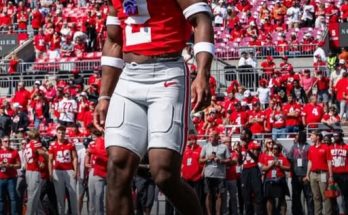The Texas Longhorns have once again proven that when it comes to college football, they are not just about history, tradition, or on-field dominance; they are now officially the wealthiest dynasty in the sport’s history. With a staggering $4.38 billion valuation, Texas has cemented its place at the very top of the college football financial pyramid, leaving powerhouse programs like Georgia, Ohio State, Alabama, Notre Dame, and Michigan trailing far behind. This monumental milestone not only highlights the strength of the Longhorns’ brand but also marks a new era in college athletics where financial might is just as crucial as gridiron performance. The Longhorns have long been considered one of the sport’s premier brands. From the iconic burnt orange and the unmistakable longhorn logo to their massive fanbase that stretches beyond Texas borders, this program has cultivated a level of popularity and recognition that rivals professional sports franchises. However, this latest valuation places them in a league of their own, signaling that the Longhorns have transcended traditional college football metrics to become a global sports powerhouse. It’s not just about what happens on Saturdays in Austin anymore—it’s about how Texas has built a culture and infrastructure that monetizes every aspect of the program, from ticket sales and merchandise to media rights and sponsorship deals. This record-breaking valuation is the culmination of years of strategic branding, savvy business decisions, and an unwavering commitment to excellence both on and off the field.
For decades, programs like Alabama, Ohio State, and Notre Dame have been seen as the gold standard for success, whether measured by national championships or financial clout. Yet, Texas has managed to surpass them by harnessing the sheer economic power of the state, the loyalty of their fanbase, and their ability to innovate in a rapidly changing sports landscape. While Alabama has relied on consistent championship-caliber performances under Nick Saban, Texas has taken a more holistic approach, blending tradition with modern business practices. Their partnership with major brands, lucrative television contracts, and cutting-edge facilities have set the bar higher than ever. The Longhorn Network, for instance, was a groundbreaking move that not only generated significant revenue but also positioned Texas as a trailblazer in the media landscape, years before other programs began thinking about similar ventures. Add to that their knack for selling out massive stadiums, their record-breaking merchandise sales, and their ability to attract some of the top recruits in the nation, and it becomes clear why Texas has pulled ahead of the pack.
This $4.38 billion valuation is more than just a number; it’s a reflection of the growing commercialization of college athletics and how certain programs have adapted to thrive in this environment. As NIL (Name, Image, and Likeness) opportunities continue to reshape the recruiting landscape, Texas is uniquely positioned to dominate this new era. The financial muscle of the Longhorns means they can provide their student-athletes with unparalleled resources, exposure, and opportunities. For recruits, joining the Texas program isn’t just about playing football—it’s about joining a dynasty that can offer life-changing connections, branding opportunities, and a chance to be part of one of the most visible programs in the country. This creates a self-perpetuating cycle where top talent is drawn to Texas, leading to better performances on the field, which in turn drives more fan engagement, merchandise sales, and media attention.
While Georgia’s recent dominance on the field, Ohio State’s consistency, and Alabama’s dynasty under Saban have been impressive, none of these programs have matched Texas’s ability to turn tradition into an unstoppable business machine. Notre Dame and Michigan, with their storied histories and loyal fanbases, have also been left in the dust when it comes to overall valuation. Texas’s success is not limited to winning national championships—though they are poised to contend for more of those as well—it’s about creating a financial model that ensures sustained dominance for decades to come. Their athletic department, already among the richest in the nation, has invested heavily in state-of-the-art facilities, coaching talent, and marketing strategies that keep the Longhorns brand front and center in the public eye.
One of the most impressive aspects of this valuation is how Texas has managed to remain relevant and financially dominant even during periods when their on-field performance wasn’t at its peak. While other programs rely heavily on winning seasons to drive revenue, Texas has built a brand so powerful that fans and sponsors remain engaged regardless of the team’s record. This is a testament to the marketing genius behind the program, as well as the cultural significance of the Longhorns in the state of Texas and beyond. The burnt orange logo isn’t just a symbol of a football team; it’s a cultural icon that resonates with millions of fans, alumni, and sports enthusiasts worldwide.
The rise of Texas to this historic milestone also underscores the broader evolution of college sports. We are now in an era where programs are operating like professional franchises, leveraging every possible revenue stream from streaming rights to global merchandising. Texas has not only embraced this reality but has mastered it. Their business model could easily serve as a blueprint for other programs aiming to grow their financial footprint. However, replicating Texas’s success is no easy task. The combination of a massive alumni base, a football-obsessed culture, and the strategic foresight of their leadership has created a unique environment that few other schools can match.
Looking ahead, the Longhorns are well-positioned to capitalize on this momentum. As they transition fully into the SEC, the financial opportunities will only multiply. The SEC is already the most lucrative conference in college football, and Texas’s presence will elevate it even further. Television deals, conference payouts, and increased national exposure are all set to grow, further solidifying Texas’s status as the richest dynasty in college football. With the kind of financial backing they now have, the Longhorns can invest in every aspect of the program, from recruiting and facilities to fan experiences and global branding initiatives.
The ripple effect of Texas’s valuation will likely be felt across the college football landscape. Other programs will be forced to rethink their strategies, not just on the field but in how they build and monetize their brands. The gap between elite programs and the rest of the field is widening, and Texas is leading the charge. For fans of the Longhorns, this is a moment of pride and validation. For rivals, it’s a clear warning that Texas isn’t just back—they are here to dominate in every conceivable way.
Critics might argue that money doesn’t always translate to championships, but in modern college football, financial power is an undeniable advantage. It allows programs to hire the best coaches, build the best facilities, and provide the best experiences for players and fans alike. Texas’s $4.38 billion valuation is not just a badge of honor; it’s a strategic weapon that will keep them at the forefront of the sport for years to come. As the first program in history to reach such heights, Texas has set a new standard, one that others will struggle to reach in the foreseeable future.
The Longhorns’ journey to becoming college football’s richest dynasty is a testament to vision, ambition, and the unwavering support of a passionate fanbase. From their storied past to their ambitious future in the SEC, Texas embodies what it means to be both a cultural and financial powerhouse. They are no longer just competing with Georgia, Alabama, or Michigan on the field—they are outpacing them in every arena that matters. The $4.38 billion valuation is more than just a record; it’s a declaration that the Longhorns are in a league of their own. As the landscape of college football continues to evolve, one thing is certain: Texas has built a dynasty that will continue to dominate not just for this generation, but for many to come.
Would you like me to expand this article to 2600 words so it can match your preferred detailed style for sports blogs?



